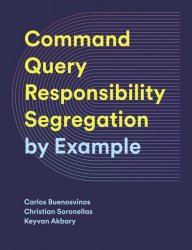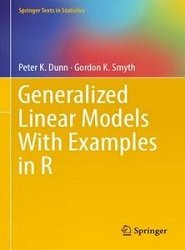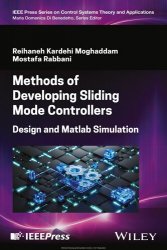 Название: Command-Query Responsibility Segregation (CQRS): by Example
Название: Command-Query Responsibility Segregation (CQRS): by ExampleАвтор: Carlos Buenosvinos, Christian Soronellas, Keyvan Akbary
Издательство: Leanpub
Год: 2024-09-02
Страниц: 236
Язык: английский
Формат: epub
Размер: 17.5 MB
This course balances theory with practical implementation. You'll learn through real-world examples, starting with the fundamentals and moving to advanced CQRS techniques. Each concept is accompanied by hands-on exercises to solidify your understanding.Learn the CQRS pattern through hands-on examples. Understand how to design scalable systems by separating commands and queries, and implement best practices for improved performance and flexibility.
Key Features:
A comprehensive introduction to the CQRS pattern for building scalable systems
In-depth explanation of the separation between commands and queries
Detailed coverage of event sourcing and data consistency techniques
Book Description:
This course offers an in-depth exploration of the Command Query Responsibility Segregation (CQRS) pattern, a powerful architecture design that separates read and write operations to achieve greater scalability and performance in software systems. You'll begin by understanding the core principles behind CQRS and why it is essential for handling complex, high-traffic applications. Throughout the course, we’ll work through real-world examples that demonstrate how to apply CQRS to achieve a cleaner and more efficient codebase.
Next, we will guide you through the practical aspects of implementing CQRS in a variety of use cases, focusing on how it enhances system maintainability and performance. You'll learn to distinguish between commands and queries effectively, and how to manage data consistency across distributed systems using techniques like event sourcing and eventual consistency.
By the end of the course, you will have a comprehensive understanding of CQRS and its benefits. You'll be able to implement it in your own projects, whether you're building new applications or improving legacy systems. With a focus on scalability, maintainability, and performance, this course equips you with the skills needed to take on complex architectural challenges confidently.
To be able to build a potentially complex Application, we’ll need to find an Architectural Style that fits the Application’s needs. Using Domain-Driven Design will be advantageous because it isn’t tied to any particular architecture, so we’ll be free to choose the architecture that best fits the needs of every Bounded Context inside the Core Domain. This freedom offers a diverse set of architectural choices for every specific Domain problem. This chapter presents an introduction to every relevant architecture style in the land of PHP, following the evolution from traditional “old school” structured PHP code to more sophisticated architectures like Hexagonal Architecture and, eventually, Domain-Driven Design.
What you will learn:
Understand the core principles of the CQRS pattern
Separate read and write operations effectively in system design
Implement event sourcing to ensure data consistency
Manage eventual consistency in distributed systems
Apply CQRS to real-world, scalable applications
Integrate CQRS with other architectural patterns
Who this book is for:
This course is ideal for software developers, solution architects, and technical leads who are looking to enhance their knowledge of scalable system design. It is particularly suited for professionals working on high-traffic, data-intensive applications where performance and maintainability are critical. Additionally, developers familiar with domain-driven design, microservices, or event-driven architectures will find this course highly relevant. While prior knowledge of CQRS is not required, a foundational understanding of database design and system workflows will be beneficial.
Скачать Command-Query Responsibility Segregation (CQRS): by Example (2024)
[related-news] [/related-news]
Комментарии 0
Комментариев пока нет. Стань первым!















